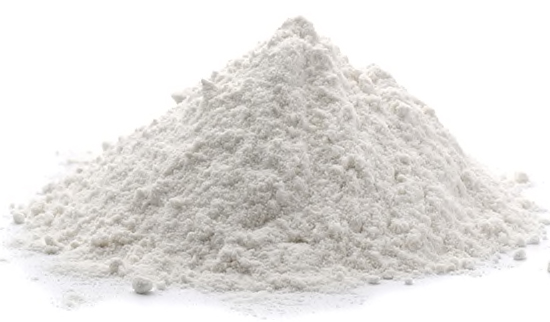Blog
Sodium Carbonate SDS | A Comprehensive Guide
Sodium carbonate SDS is an essential document that provides detailed information about the chemical, its potential hazards, and guidelines for safe handling. Known as soda ash or washing soda, sodium carbonate is widely used in industries ranging from cleaning agents to glass manufacturing. In this article, we’ll explore the significance of sodium carbonate SDS, key safety measures, and why this information is crucial for your safety.
What is Sodium Carbonate?
Sodium carbonate is a white, odorless powder that dissolves in water and forms a strong alkaline solution. It’s primarily used in manufacturing detergents, glass, and various chemicals. Though relatively safe when handled correctly, improper use can lead to health and environmental hazards, which is why following the sodium carbonate SDS is vital.

Understanding Sodium Carbonate SDS
The Sodium Carbonate Safety Data Sheet (SDS) is a document that provides a detailed breakdown of the chemical’s properties, potential risks, and safety procedures. It helps ensure proper use, handling, and storage of sodium carbonate, reducing the risk of accidents in workplaces and homes.
Key Sections of Sodium Carbonate SDS
- Identification: This section provides the product name, recommended uses, and supplier information. It ensures that users know exactly what chemical they are handling.
- Hazard Identification: Sodium carbonate SDS outlines the potential health effects of exposure. While sodium carbonate is generally non-toxic, it can cause irritation to the skin, eyes, and respiratory system if mishandled.
- Composition and Ingredients: This section lists sodium carbonate as the primary ingredient and includes any potential impurities that may affect its safety.
- First-Aid Measures: Instructions on what to do in case of accidental exposure. For example, if sodium carbonate comes into contact with the eyes, the SDS recommends flushing the eyes with water for several minutes and seeking medical advice.
- Fire-Fighting Measures: Sodium carbonate is not flammable, but the SDS includes guidance on the best fire-fighting practices in case of fire involving sodium carbonate or its packaging.
- Accidental Release Measures: Sodium carbonate SDS provides guidelines for safely cleaning up spills to prevent harm to individuals and the environment.
- Handling and Storage: Proper handling and storage practices are crucial. Sodium carbonate should be stored in a dry, well-ventilated area away from acids.
- Exposure Controls/Personal Protection: This section outlines the necessary personal protective equipment (PPE) like gloves, goggles, and masks to avoid exposure to sodium carbonate.
- Physical and Chemical Properties: The SDS provides details about sodium carbonate’s physical state, color, odor, and solubility.
- Stability and Reactivity: Information on how sodium carbonate reacts with other chemicals and conditions to avoid for safety.
- Toxicological Information: Sodium carbonate SDS explains the effects of prolonged or repeated exposure, as well as potential long-term health impacts.
Why Sodium Carbonate SDS is Important for Safety
Understanding and adhering to the sodium carbonate SDS is critical for preventing workplace accidents and ensuring the safety of employees handling this substance. The SDS not only provides vital safety precautions but also informs workers on how to respond in case of an emergency. Here’s why it’s crucial:
- Prevention of Health Hazards: By outlining the risks, including skin and respiratory irritation, the SDS helps users take necessary precautions.
- Guidelines for Safe Handling: The document provides clear instructions on proper storage, handling, and disposal of sodium carbonate, reducing the risk of accidents.
- Emergency Procedures: Knowing how to respond quickly to exposure or spills can prevent minor accidents from becoming serious health issues.
Safe Storage and Handling Practices for Sodium Carbonate
Sodium carbonate is easy to store and handle when proper safety measures are taken. Here are a few best practices as detailed in the sodium carbonate SDS:
- Wear Protective Equipment: Always use gloves, safety goggles, and a dust mask when handling sodium carbonate in powder form to prevent skin and respiratory irritation.
- Store in a Dry, Ventilated Area: Sodium carbonate absorbs moisture from the air, which can reduce its effectiveness. Store it in tightly sealed containers in a dry location.
- Avoid Contact with Acids: Sodium carbonate reacts with acids to release carbon dioxide, which can cause pressure buildup in containers or exposure to harmful gases.
- Clean Spills Safely: In case of spills, avoid sweeping the dry powder, which may stir up dust. Instead, use a damp cloth to wipe up smaller spills or follow SDS guidelines for larger spills.
The Role of Sodium Carbonate SDS in Emergency Situations
It is essential not only for day-to-day operations but also for handling emergencies. Here’s how it helps:
- Accidental Exposure: Quick reference to the first-aid measures section of the SDS can make the difference in ensuring the right steps are taken following exposure.
- Spill Response: It offers clear instructions on containing and cleaning up spills, minimizing environmental and health impacts.
- Fire Response: Although it is non-combustible, the SDS outlines appropriate measures for managing fires in proximity to the substance.
Conclusion
Sodium carbonate is widely used and generally safe when handled correctly. However, understanding and adhering to is critical for ensuring safety. The document provides comprehensive information that helps minimize health risks, ensures proper handling, and details the necessary emergency measures.
Whether you’re working with sodium carbonate in an industrial setting or using it for cleaning at home, following the guidelines outlined in the SDS will protect you and those around you.
FAQS
1. Is sodium carbonate considered hazardous?
Sodium carbonate is not classified as highly hazardous, but it can pose certain health risks if not handled properly. It can cause irritation to the skin, eyes, and respiratory system when inhaled or contacted in significant amounts. The SDS typically recommends wearing protective gear to avoid direct contact and inhalation of dust.
2. What is the SDS hazard statement for sodium bicarbonate?
Sodium bicarbonate (NaHCO₃) is generally regarded as safe, with minimal health risks. The hazard statements in the SDS for sodium bicarbonate typically include:
- May cause mild skin or eye irritation.
- Avoid breathing dust.
- If in eyes, rinse with water as a precaution.
Sodium bicarbonate is less hazardous than sodium carbonate but still requires proper handling to avoid irritation.
3. Is Na₂CO₃ harmful to the environment?
Sodium carbonate (Na₂CO₃) is not considered highly toxic to the environment. It is typically biodegradable and breaks down into non-toxic components. However, large quantities released into water systems can increase alkalinity, which may negatively affect aquatic life. Following proper disposal guidelines is key to minimizing environmental impact.
4. What are the uses of sodium carbonate?
Sodium carbonate has a wide range of applications, including:
- Glass manufacturing: Used as a raw material in glass production.
- Detergents: An ingredient in household and industrial cleaning products.
- Water softening: Helps remove calcium and magnesium ions in water treatment.
- Chemicals: Used in the production of other chemicals like sodium silicate and sodium phosphate.
- Food industry: Used as a food additive (E500) and pH regulator.
Sodium carbonate is a versatile chemical with both industrial and household applications.
